Understanding true life in Mbamba Village
Day 25 - Day 26: Malawi
30 July - Day 25
Chipata - Kande Beach, Malawi
Accommodation: Kande Beach
Early morning’s certainly aren’t my jam, so having to be up at 0420 to pack up my tent and things before breakfast at 0445 wasn’t my most favourite activity of the trip so far. Despite still having no power at this campsite it was the best place to be waking up this early as Fifi came to help me pack up my tent. However, she certainly wasn’t helping, instead she was laying on my tent after I had unclipped it, tried to run off with my tent pole bag and insisted on cuddles. It was the longest it’s taken me to pack up my tent the whole trip but the most enjoyable.
We arrived at the Zambia/Malawi border just after 0600, the time it opens, to try and get through as early as possible, as it’s one of the busiest border crossings. We walked in as the sun was rising with a beautiful orange hue in the sky and strobing fluorescent lights in the building. Thankfully our truck paperwork and passports didn’t take long at all, it was just the Visa documentation for a few people on the trip that had us waiting until 0800.
Hello: Mully-bee-unge
Our first view of Malawi, quite literally as soon as we drove out of the immigration building, was a street filled with local markets busy with people trying to sell fresh produce.
As we drove through the country on the way to our campsite we were stopped by numerous police check points. While this wasn’t unusual based on other countries they were certainly more frequent with at least five checkpoints within the first hour of driving.
Many of the villages here have houses made of red brick surrounded by farming land. The people were wonderful. Many children would wave profusely with huge grins on their faces, others would just stare or point, stare and wave. It was a strange feeling standing on the bus looking out at where people lived, did business and grew up. I felt privileged to see the tiniest slice of their lives while we drove past waving and smiling.
The only way we could continue to Kande Beach was through the Nwgotagota National Park, of which the roads were the worst of the trip so far. If you’ve driven through the Tanami Desert you’ll have a bit of an idea what we were dealing with - just times that experience by three.
The road looked like it had a giant crack through the middle of it, a giant crevice that could eat our truck. All we could do was hold on as we crawled over some of the pot holes. If you didn’t hold on, you would have smashed your head into the window as the truck rocked from side to side. Some sections looked like it was going to be ok but they weren’t, others looked terrifying but were ok - it was like a rollercoaster.
Our 24-year-old truck surprisingly emerged in one piece. We left the national park and were welcomed out with a much flatter road. It was a welcome relief driving through the local town and stopping at a garage for a stretch of our legs and a squat toilet.
Pulling out of the petrol station/garage, the bitumen came to a stop and instead only half the road was covered in a small slab, while the other side was red dirt littered with pot holes. It no wonder we were told we wouldn’t be arriving until 1800. Sometimes though even the dirt road was in better condition than the bitumen and we instead opted to drive on the dirt road instead.
As we turned a corner on the road Lake Malawi came into view - it was huge. Despite knowing it takes up 20% of the country, I couldn’t fathom how big the lake really was. It looked like the ocean, with the other side of the lake not visible. The landscape had changed significantly, the only thing that was similar to the previous area was the red dirt that you could occasionally see on the side of the road. The trees were lush and green and the landscape almost looked tropical with big palm trees of all different varieties and very fertile farming land. Rice patties covered parts of the area, while other patches were filled with strategically piled mounds of dirt with plants growing out of them - we would later learn this was the cassava plant. Mountains framed the skyline and the lake would pop in and out of view as we drove. It was the greenest landscape I had seen since arriving in Africa.
We drove through a few villages, across bridges and past people walking on the side of the road with firewood balancing on their heads.
Signs reading Kande Beach came into view and we knew we were finally close. We arrived in a small town and stopped at a tiny dirt side street, only just big enough to fit our bus by a few millimetres.
It was so close locals had to move their motorbikes parked on the side of the road and our windows scraped the side of the bamboo roof of one of the stalls. People drinking at the local pub yelled hello to us and asked Lindley (one of the ladies on our tour) if she wanted another grandson. The road didn’t get any wider as we drove through the sandy track, occasionally having to shut our windows to stop the branches of trees whipping inside the truck and slapping us in the face. Occasionally we were too slow, distracted by young children cheering and waving at us as our bus drove through their village. A group of four young children even ran to keep up with our bus, waving and yelling hello.
We arrived at Kande Beach just before the sun set. It was a beautiful spot to stop, with a big sandy beach off the lake, which led into the tropical bar and campsite. We enjoyed our dinner on the outdoor tables and met three local guys: Jo, Claver and Kevin Costner who explained three optional activities including a village walk, bike ride and fishing.
31 July - Day 26
Kande Beach, Malawi
Accommodation: Kande Beach
Vincent confidentially told us the mosquitoes don’t bite during the day because it’s too bright and they can’t see you, so don’t worry about mosquito bites today… Not believing him for one second I layered by sunscreen and mosquito repellent, ready for the day. After breakfast at 0830, Claver met our group ready for our village walk. He explained that once we walked out of the gates there would be local market people that would greet us and chat to us before we continued walking. Just as he said as soon as we walked through the big black gate of our accommodation, we were greeted with a friendly handshake by a local market stall holder who introduced themselves to us and asked where we were from. This is where I met Billy for the first time.
Surprisingly we had to keep walking but the local men came with us, which none of us were expecting. Rather than a quick chat, the men that had introduced themselves to us ended up being our local individual guide for the whole morning tour. We walked through the village and chatted about where I was from and Billy’s life in the village. As we walked village children ran to greet us, grabbing our hands and walking with us.
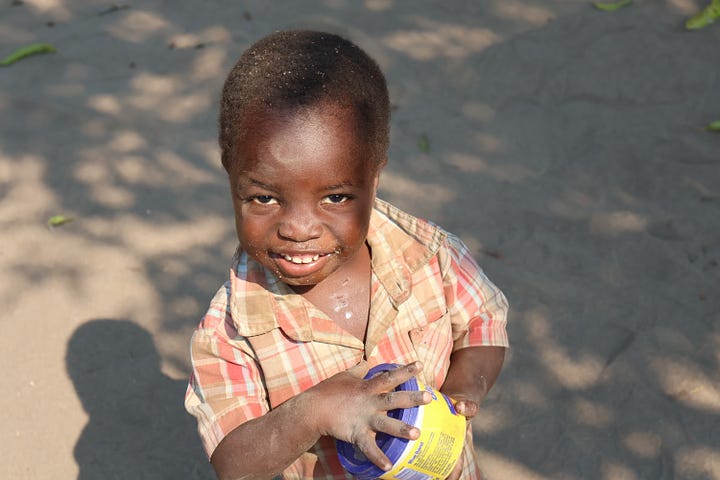

Their tiny hands would just wrap around yours and not let go, sometimes I had two children on each side holding parts of my hand each. They were incredibly happy to see us in their village.
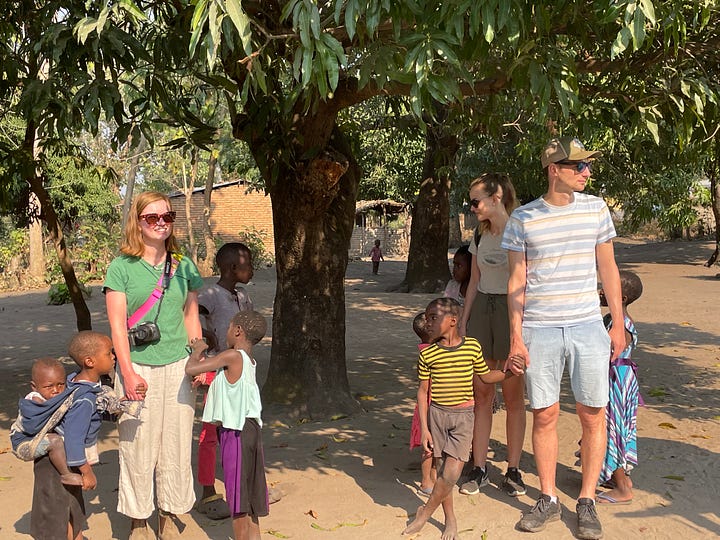
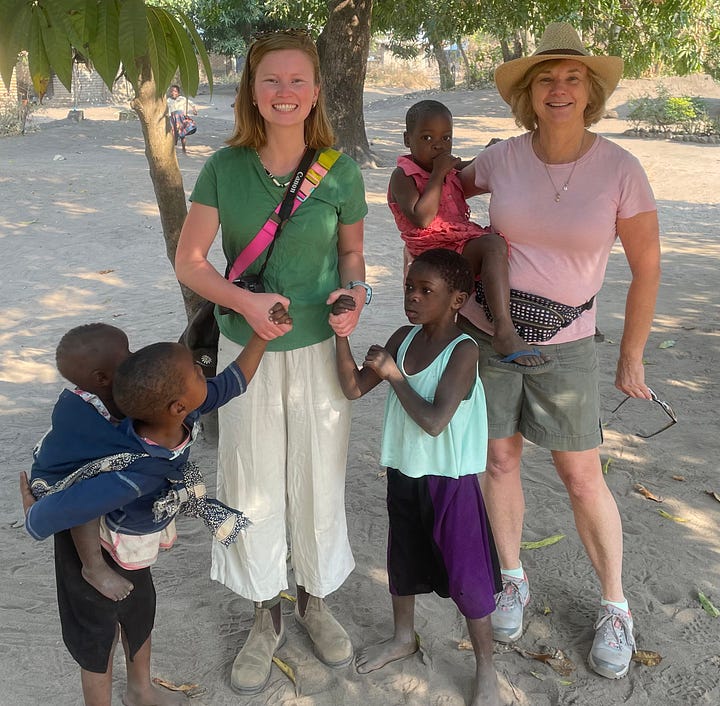
Our first stop was at a chicken hut, which had been built above the ground, taller than my head. Claver explained that previously these chicken huts were on the ground but hyenas would come and eat the chickens, so they had to build them taller. During the day the chickens roam around the village, walking wherever they please but at night they always come to their little home in the sky, using a ladder to hop up into their beds.
The children followed us as we continued walking, one finding my watch and the buttons on either side. She pressed the buttons to no end, my watch buzzing like it was going to explode. We stopped at a tray of drying cassava, where the children were told in either Tonga (the local village language) or Chichewa language (Malawi’s local language) to move away so we could concentrate. Claver explained the table in front of us was filled with drying Cassava. There are two types of cassava, one that is sweeter for bread and chips and the other that is more sour. The cassava would dry for three weeks before they would make it into chips for breakfast, lunch and dinner. Cassava was the primary staple in the Mbamba Village people’s diet.
Our next stop was at Claver’s home, he welcomed us into his living room, which had a Manchester United flag and scarf decorating the wall, a small table and enough chairs for us all to sit down. The floor and walls were concrete and the roof was made of straw. Compared to the already warming day, it was very cool inside his home. We sat and listened as Claver explained he lived with his wife and son, brother and sister all in the same three-bedroom house.
Walking through the village many women were going about their day hanging out washing on clotheslines outside their homes, while children ran around and played with one another. Sand covered the ground of the village, with big trees - even some gumtrees - towering over the area and providing shade. The village had clay brick houses scattered throughout the area, some on an angle, some close together and others spread out. They each had open windows and the majority had straw thatched roves, with the occasional tin roof scattered throughout. Smaller hutts would often surround the homes, which consisted of their kitchen and bathroom. A water pump, which was donated by Canada, sat in the middle of town where women pumped water into buckets and then carried them on their heads to their homes. Young girls even lined up with smaller buckets, placing them on their heads too.
Each of the local village guides joined us again as we started our walk out of the village towards the school. Billy explained he had grown up in the village, going to school here hoping to become a teacher but never got the opportunity. He asked about life in Australia and I asked more about his life in Mbamba. He told me he had a wide and a young boy, Brandon, who was going into year two next year, who had the neatest writing and he was incredibly proud of. We walked past the village farming land, which primarily consisted of cassava and Billy told me about how the plots are separated by thin paths running through them, and how Cassava isn’t the only thing they grow, with some plots growing rice or sweet potatoes. I asked Billy about why everyone in the area consistently burns the land so frequently and he said it was to regenerate the shoots of the grass grown for their thatched roofs. He said generally all of them are watched and controlled to stop any damage to homes or farming land but occasionally they do get out of control.
We walked through the quiet market street (tomorrow, Thursday, would be busy when we left the town as it’s market day) before arriving at the school. School holidays had just started on the Friday before, almost a week ago, so there were no children in class. We waited a few minutes before the school principal arrived to speak with us. He brought us into the library and invited us to sit down. The school had 1,500 students and only 13 teachers. Students would start school at 0730 each morning with the junior students finishing at 1100, the primary at 1200, and seniors at 1430.
Due to the number of students each teacher taught about 150 students in a class, with five students to a table. Ngoma marshal, the school principal told us the school had started a feeding program to help the children who come to school with no food - many who had walked kilometres to arrive at school.
The Principal also explained a new rule had been brought in several years ago to make uniforms compulsory, meaning that all children would be treated the same and those that didn’t have much were not pointed out as the poorer child. However, that created some problems of its own as many families couldn’t afford to buy clothes, so the school was trying to help fund uniforms too. Donations from tourist was the main way the school was able to help these children and families and he had asked us to donate if we could and record our details, so they could be held accountable and email us updates.
Next we walked to the local medical clinic, which was the only one in the town. Many people, primarily women, waited in an adjacent room with their children, others just on their own. Our group was taken into a back room, which housed a few seats and some motorbikes, where the midwife told us about the clinic. He explained it was a small facility, which was used for HIV and malaria testing and as a pre-natal, post-natal and birthing clinic. The mother hospital was 80 kilometres away, so this clinic provided the basic needs for the village. However, they were not able to do blood transfusions, didn’t have a humidi-crib or ability to administer oxygen. The clinic didn’t even have an ambulance that could transfer women to the mother hospital if they needed it. Instead they had to use private cars, if they were available, which the hospital only paid half the fee for. This created many complications for the village and sadly many babies died because of it. He told us a story of a woman who was directed by the clinic to go to the mother hospital to get help for her pregnancy but she didn’t have any transport to get there. Instead she gave birth last night at home to triplets, which sadly all three of them died without medical care. The midwife explained that when women fell pregnant in the village they were given a mosquito net and medication to prevent malaria because if a woman contracted malaria, her baby would die. They would be advised to get nursing pads but they were highly unavailable, so they would instead use an old blanket and rip it into pieces instead. It was a confronting reality to learn about the lack of health care they had in their village. We were told we were allowed to take photos here, however, given it was an operating medical clinic, I didn’t feel comfortable.
Billy met me outside of the hospital as we started the walk back down to the village. I was still reeling from the talk at the hospital and he noticed, asking me how different our healthcare was in Australia. He told me about their village being managed but a Chief who would make all the major decisions for the town and settle any quarrels between the village people. Elders also help manage the village but it was the Chief who had the ultimate say. The next Chief of the village would be niece or nephew of the current ruler, whomever was the most smart in the family. Certainly a good family to be born into. We walked through the local forest, which he explained the Chief protects, so no one can clear or build in the forest.
Billy taught me a lot about their local village way of life, he explained a huge flood had damaged the crops and homes in the village from February - June, the biggest flood from rain that he had ever seen; that the mango trees in the village will bare fruit in December and anyone can take from any tree; how if he was to invite someone very special for dinner this would be the only time his family would eat meat, killing their only chicken; he told me the women start to learn to balance buckets and supplies on their heads from the age of seven; and that the favourite local game is the Bao. Bao is named after the Baobab tree, and the aim of the game is to take all of the rocks from the other persons tray. At the end of our walk back to the village, Billy took me to his shop where we played two games of Bao. The rules are simple, you can move either clockwise or anti-clockwise picking up a pile of rocks and dropping one rock in each hole until all the rocks in your hand are empty. If you finish on an empty hole you then take the rocks from the other persons two holes but if you finish on a full hole, you pick up the rocks from that hole and keep dropping rocks until you find an empty hole. I was able to clear Billy’s side out first, which meant I won but when we played for real, Billy beat me.
Billy’s shop was an open hut with a bamboo roof. It was a simple area with paintings for purchase on the laid out on the ground and a small table and seats where we played the Bao game. He had seven guys that helped him to make the wooden art and paint, which they said took about a week to make and dry. I bought two paintings from Billy to ensure I supported him after everything he told me and his kindness. He was thrilled. He walked me back to the accomodation gate where our main guide, Claver was waiting. He had invited me to meet his family and see his house in the afternoon and repeated his offer again when we said goodbye. I said I would let him know because I wasn’t sure what we were doing for the afternoon, and I was unsure if it was a safe option.
Lunch was served when we arrived back from the tour at around 1245 - an hour and 15 minutes later than expected. After a few hours, one of the staff at the accommodation said Billy had returned and had a bracelet for me on the beach. After confirming it was a safe thing to go with Billy, telling people where we were going and asking Lindley, one of the other group members to join me, we walked down to the beach to meet Billy. Many others in our group had opted to go fishing on the island, so they walked down with us and we waved them goodbye - jumping into the boat with about 20 bamboo fishing rods on the front of the boat and a number of locals who decided to join.
I introduced Linley to Billy and we started walking to his home. It was one of the best afternoons of my life. Billy proudly showed us his son, pregnant wife and home. His son, neices and nephews were all playing outside the house and ran to greet us.
Billy pulled out some small chairs for us to sit on and we chatted about his home. Us being seated didn’t last long, as Billy was eager to show me around his home.
He showed me the outdoor kitchen, where they cook all their meals, which was a small concreted area with a straw thatched roof above it.
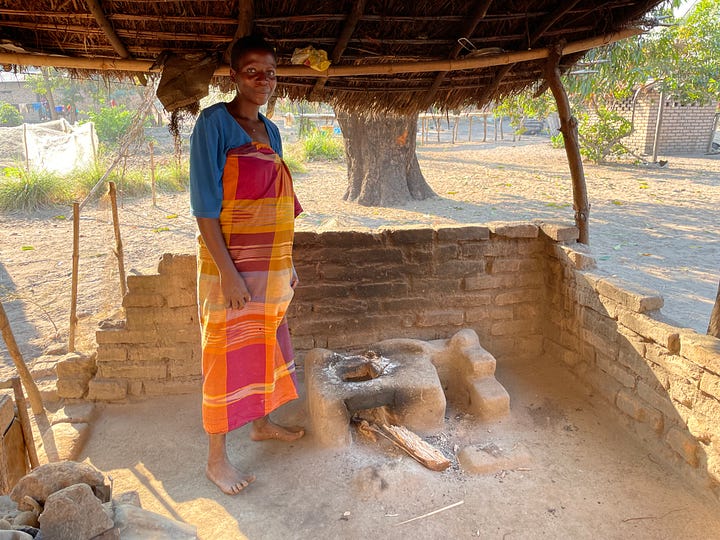

Next was the chicken hutt and wooden stairs that he had built for his chicken. The bathroom was outside, made of grass sides with no roof. Billy explained when they wanted to shower they would bring a bucket into the area and splash themselves with water.
Billy invited me into his home, which had no furniture in the living room and two pieces of fabric draped over the entrance to each bedroom. He showed us inside the bedroom which had a backpack hanging on the wall, a bamboo mat on the ground with a mosquito net (likely from the clinic’s pre-natal service) and what looked like a wooden bed with a thin woven mat on top. He asked his son Brandon to grab something from his room, proudly his son ran behind the curtain and re-emerged with a writing book. Brandon’s writing was incredibly neat and very advanced for a two year old - Billy told me he hoped his son would follow his dream of becoming a teacher.
After the tour, we sat back down on the small chairs and I continued playing with the boys who loved to high-five.
As we were chatting we heard the beautiful sound of a nearby choir. Their voices floated through the air with a beautiful acapella harmony. Billy asked us if we wanted to go closer, which we absolutely did. We walked behind his house to the church where three women and a man were singing. Walking up the steps with both boys holding each of my hands, we followed Billy inside to stand next to the circle where they stood. Their voices were like liquid gold. After they had finished their song the head lady invited us to stand with them and dance. Together we danced for more than half an hour with the choir. I had a grin from ear to ear as the little boys danced with us and the choir sang.
We said our goodbyes and slowly walked back to the accommodation. Of course, it wasn’t without excitement with a tourist getting stuck in the sandy tracks of the village, while trying to reach their accommodation. We all ran to assist, helping her out in less than ten minutes.
The sun had dropped below the horizon, so I went and watched the last of the light show sitting on the beach.
Billy instigated all of the photos of us together, and was incredibly proud to show me his home. I will be forever grateful for Billy and his families kindness. It was so wonderful to be invited into Billy’s home and see how he and his family lived in Mbamba Village.



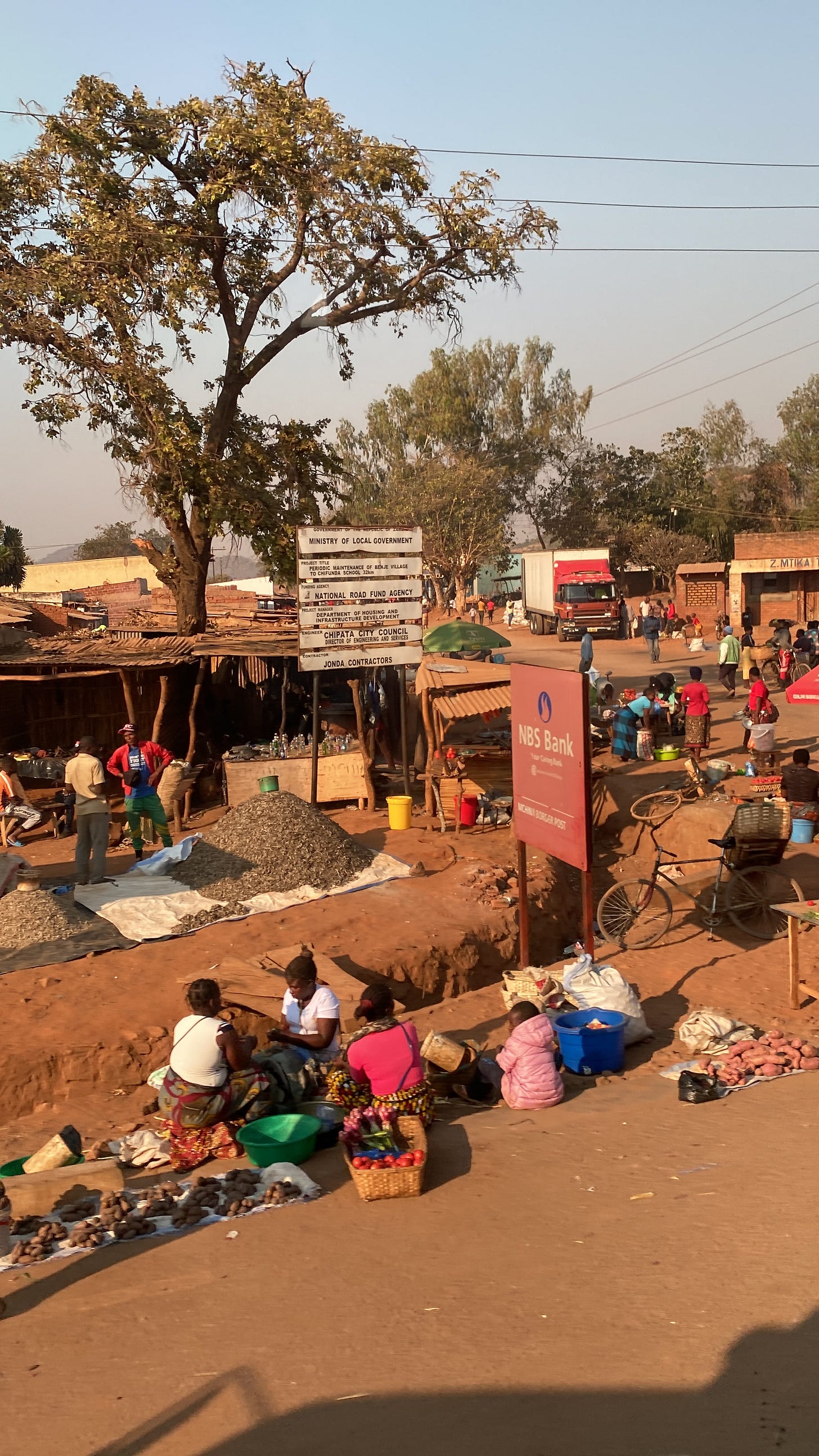

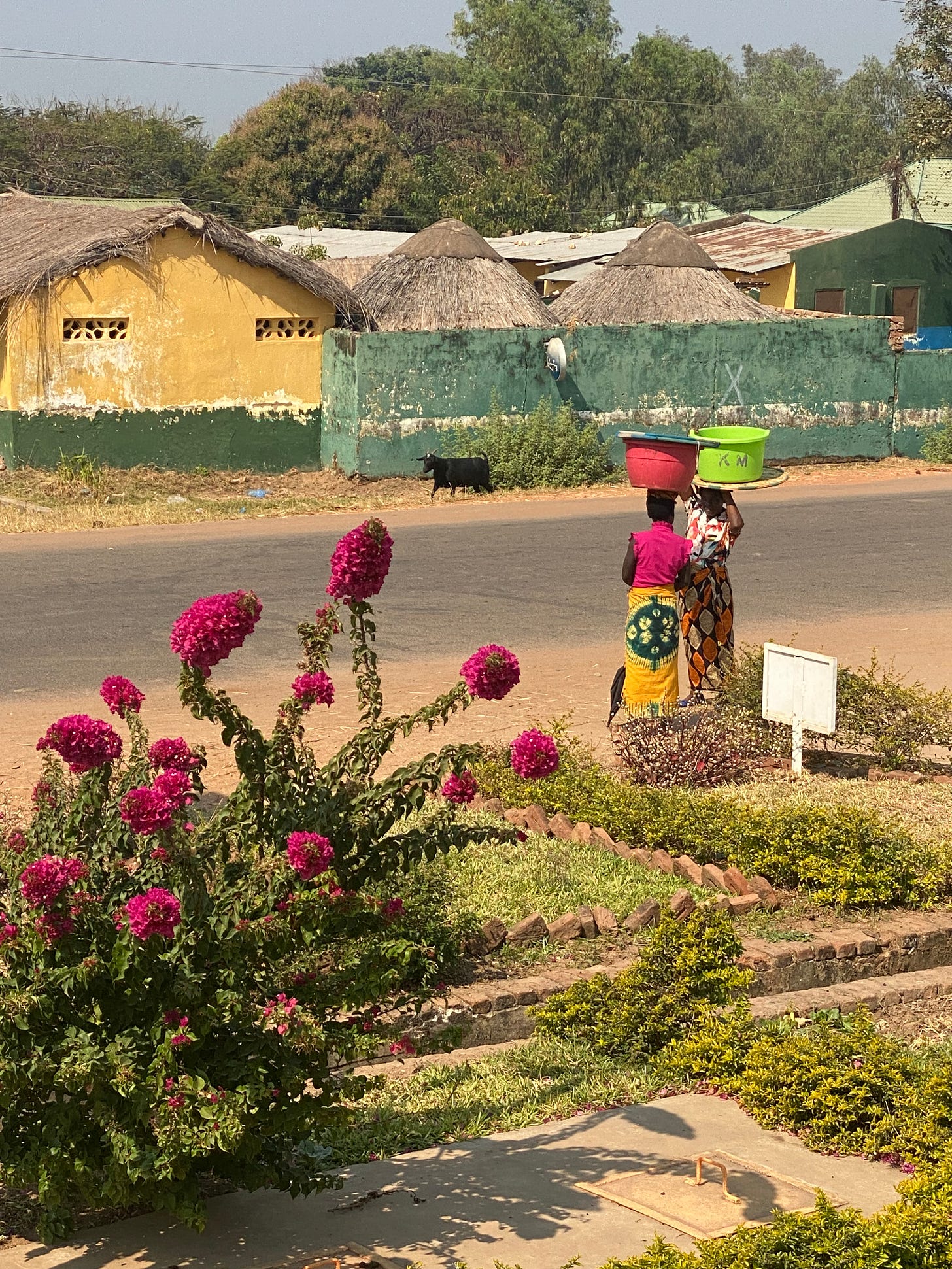

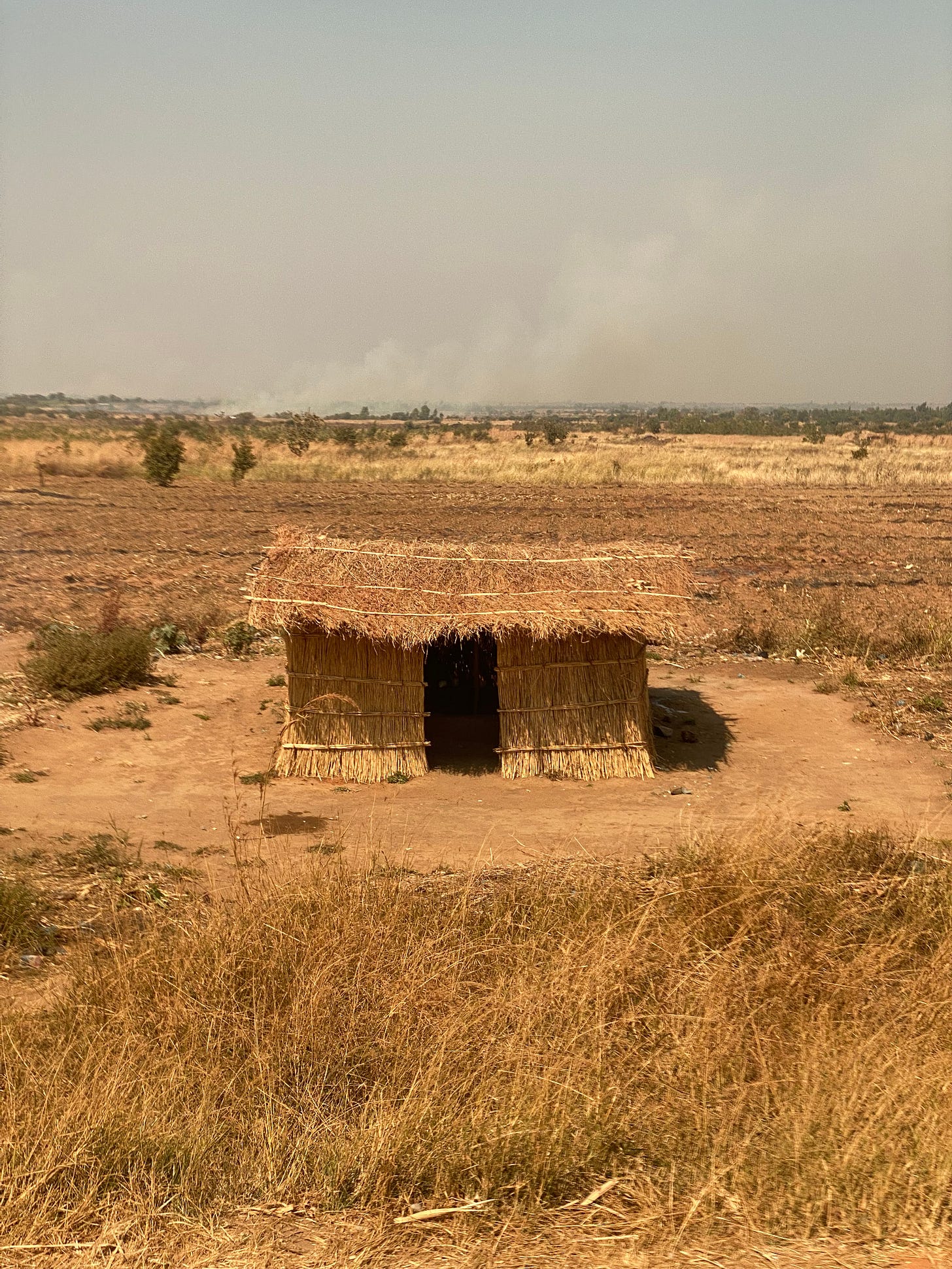


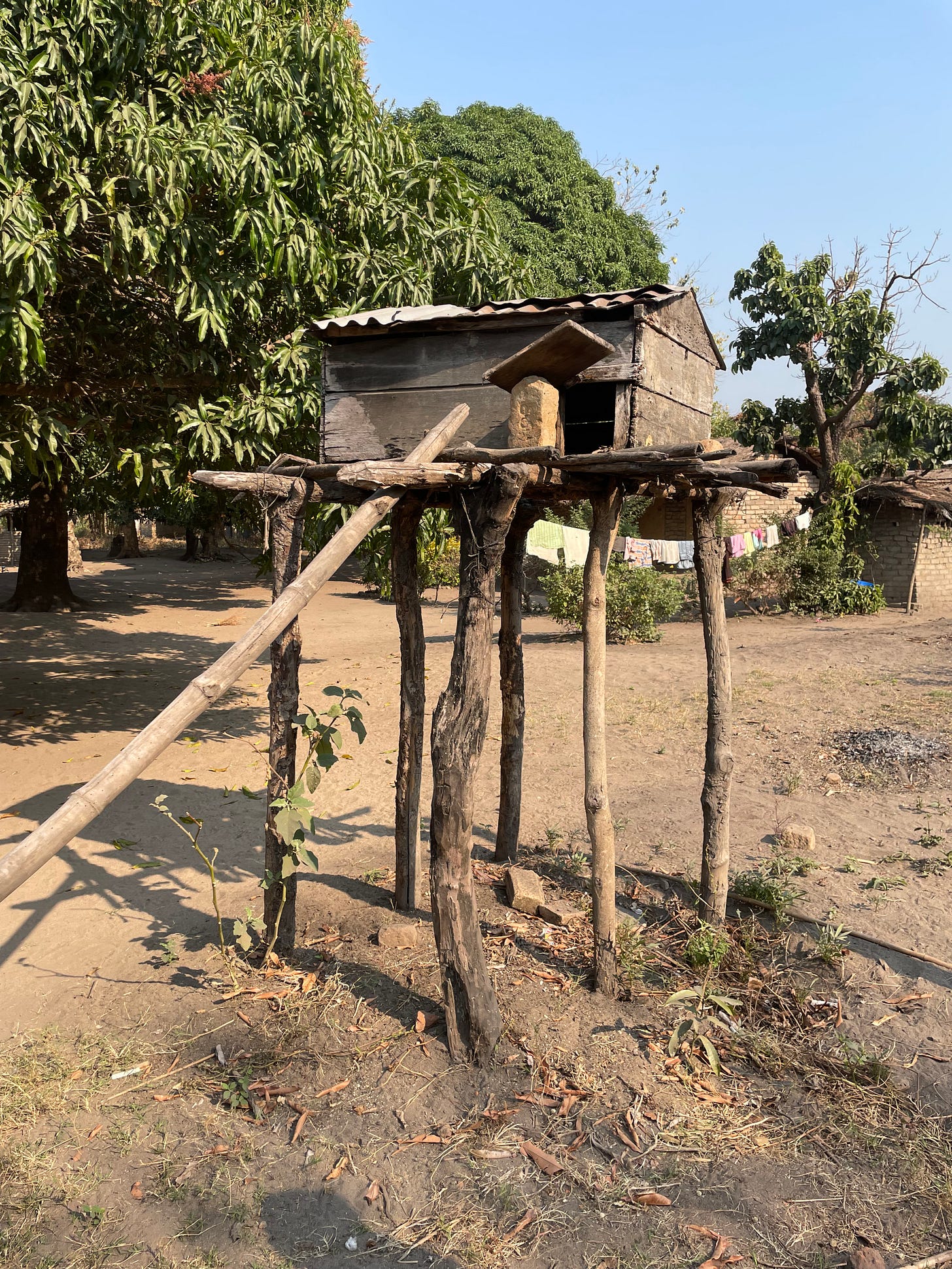
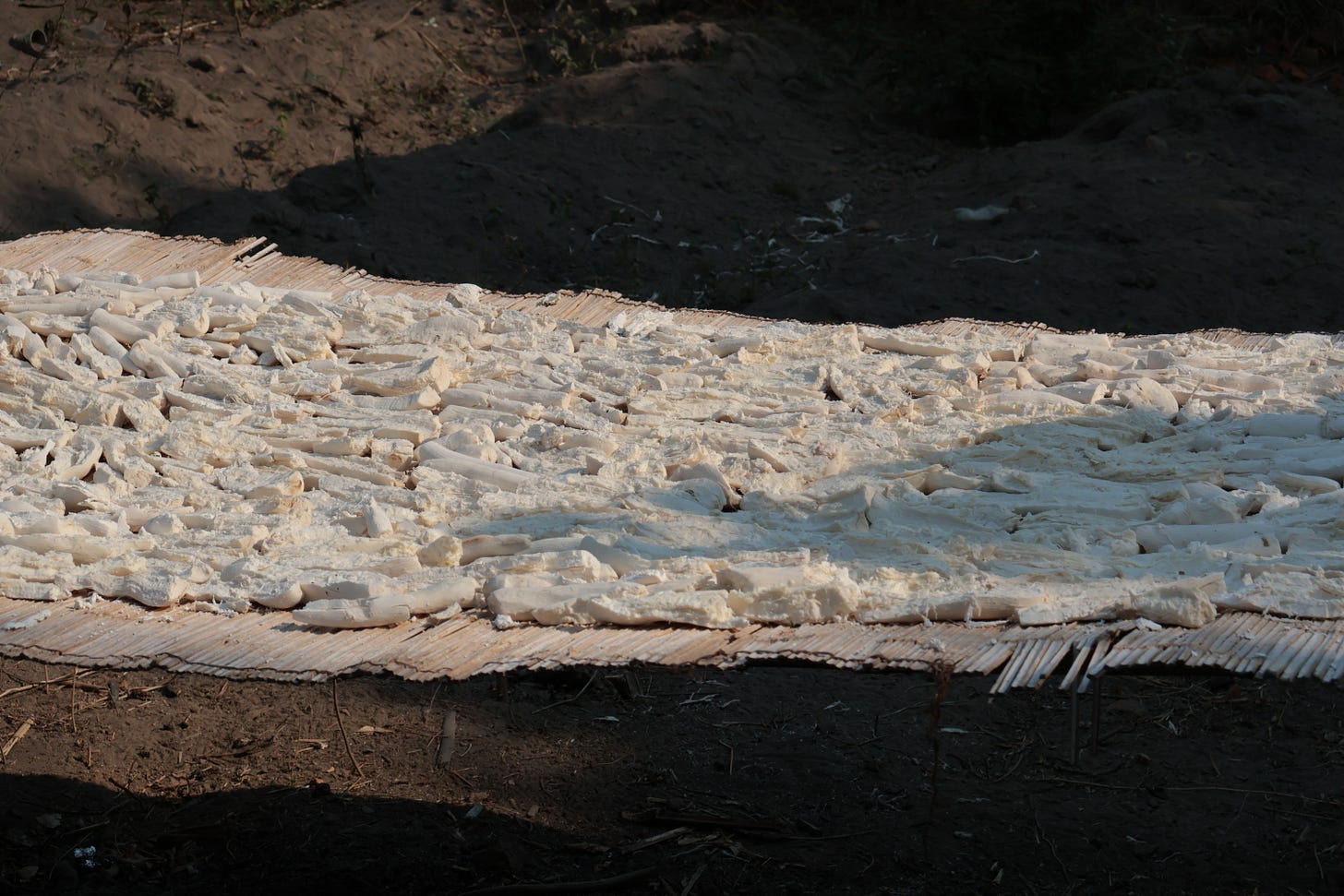

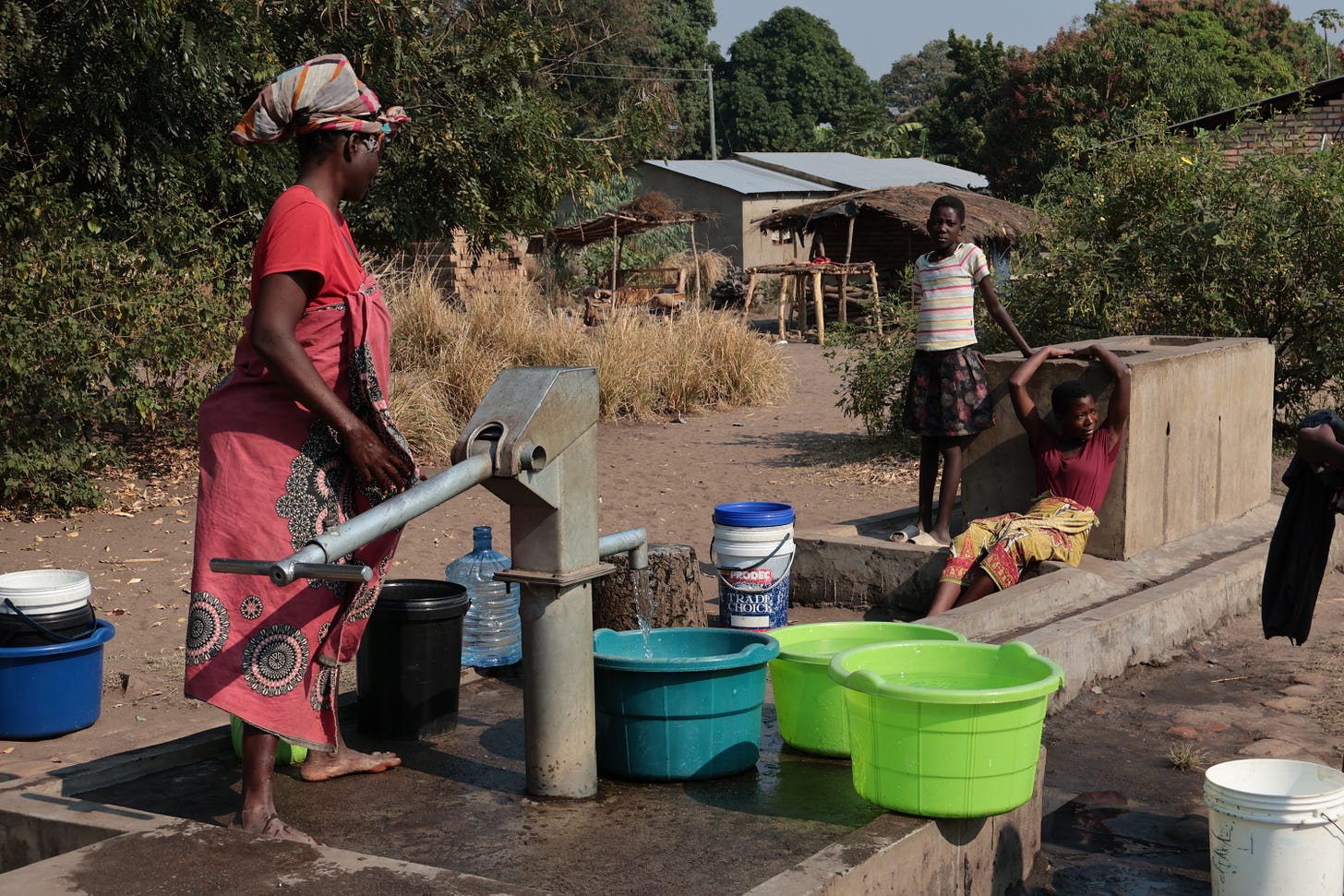
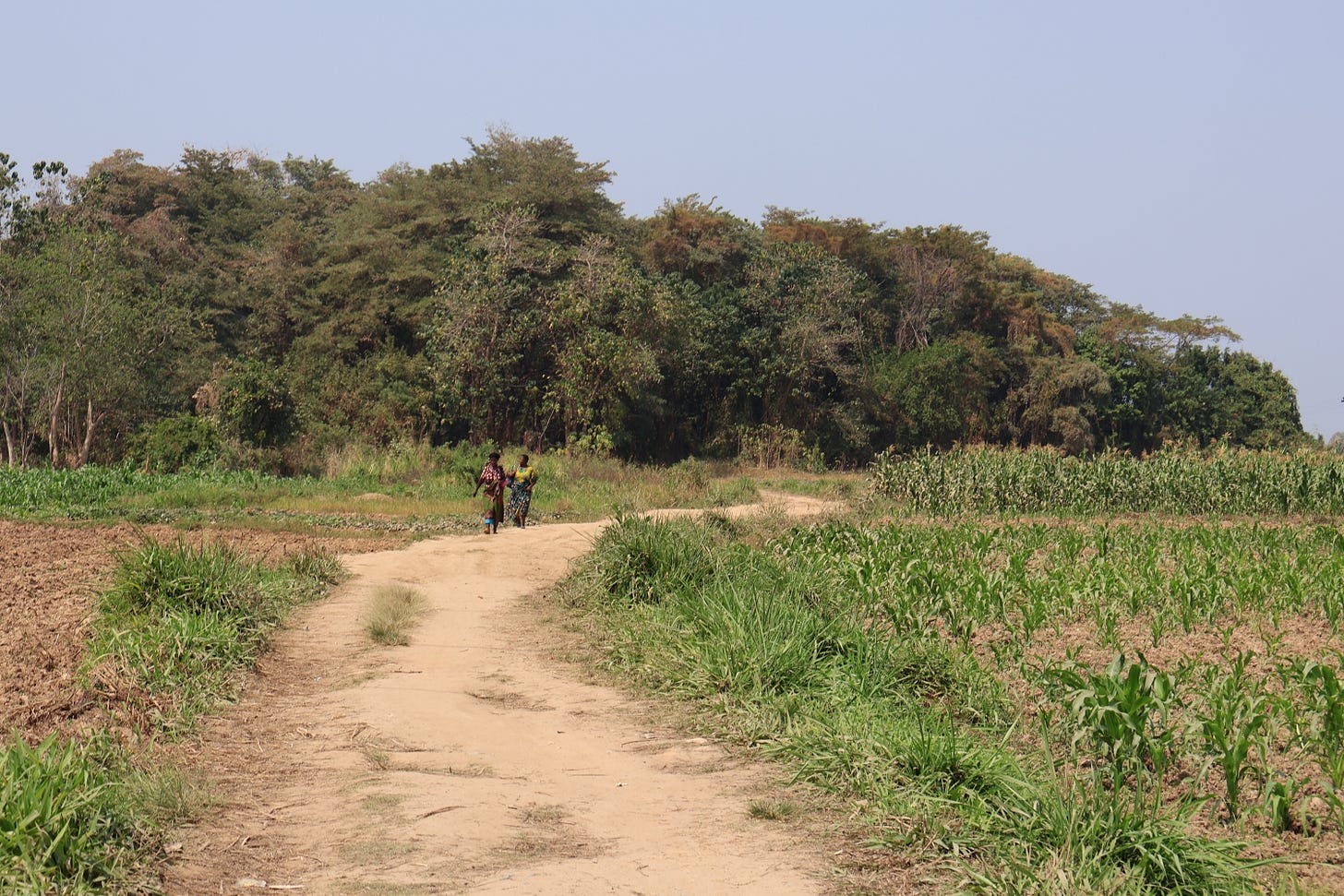

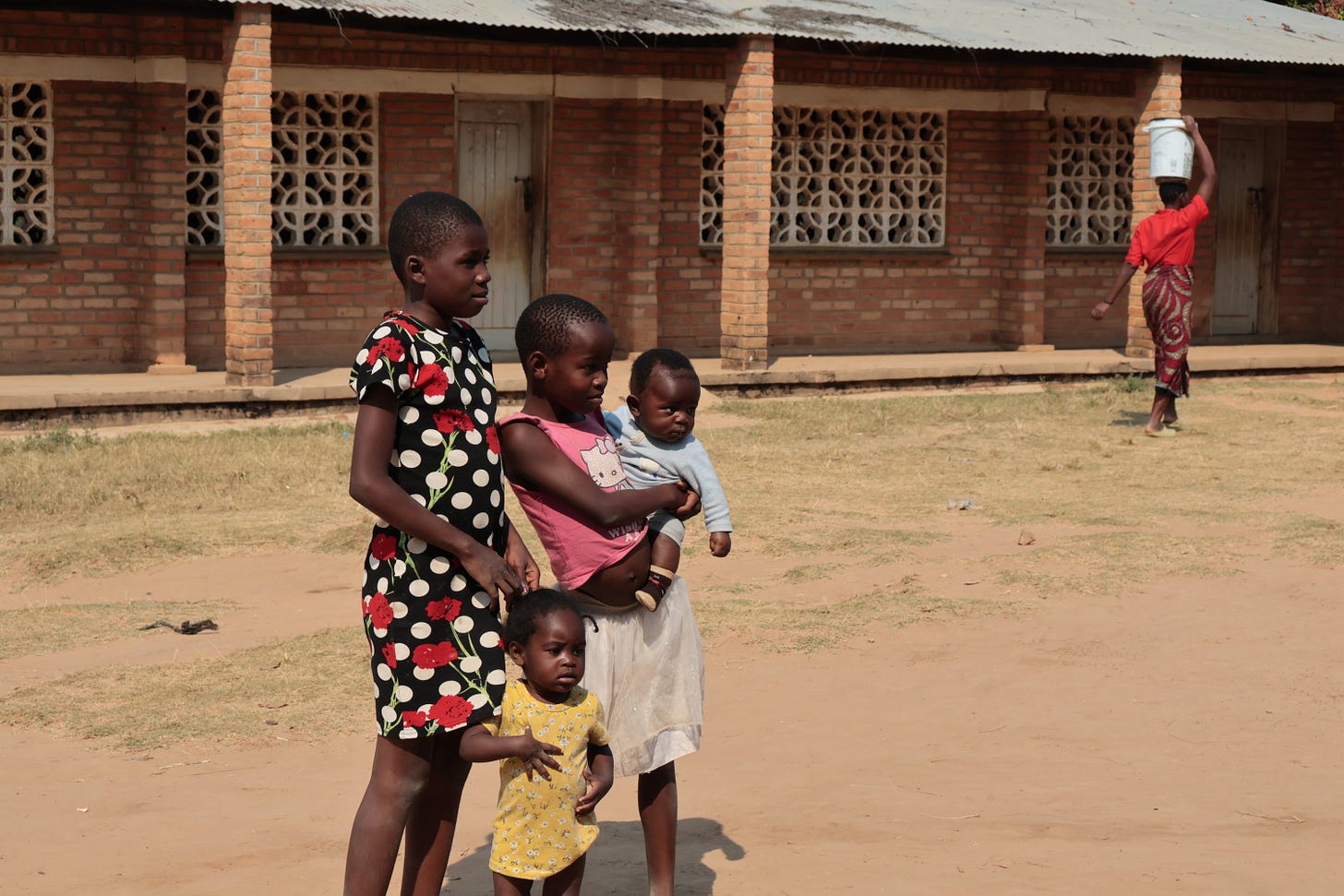
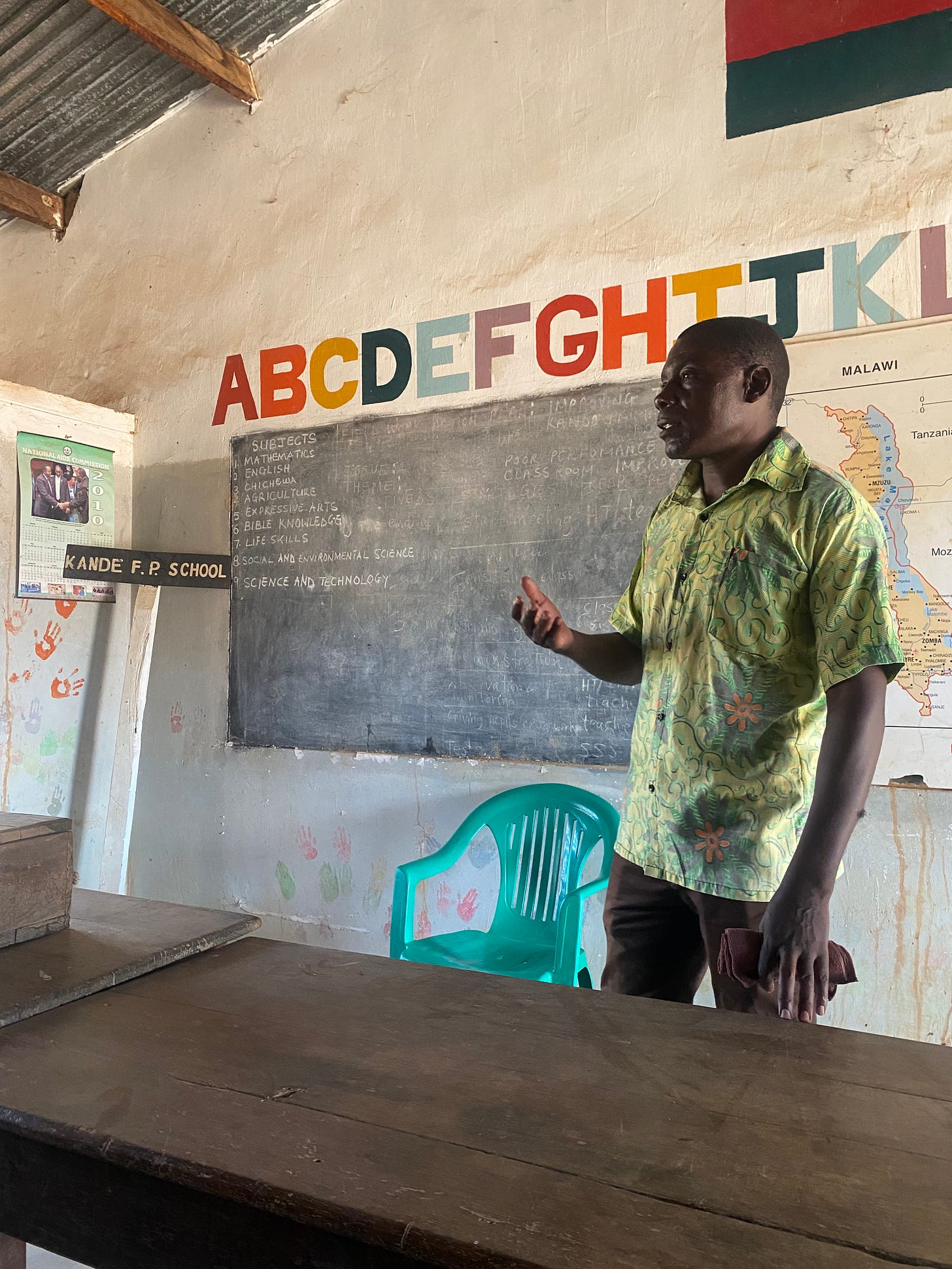

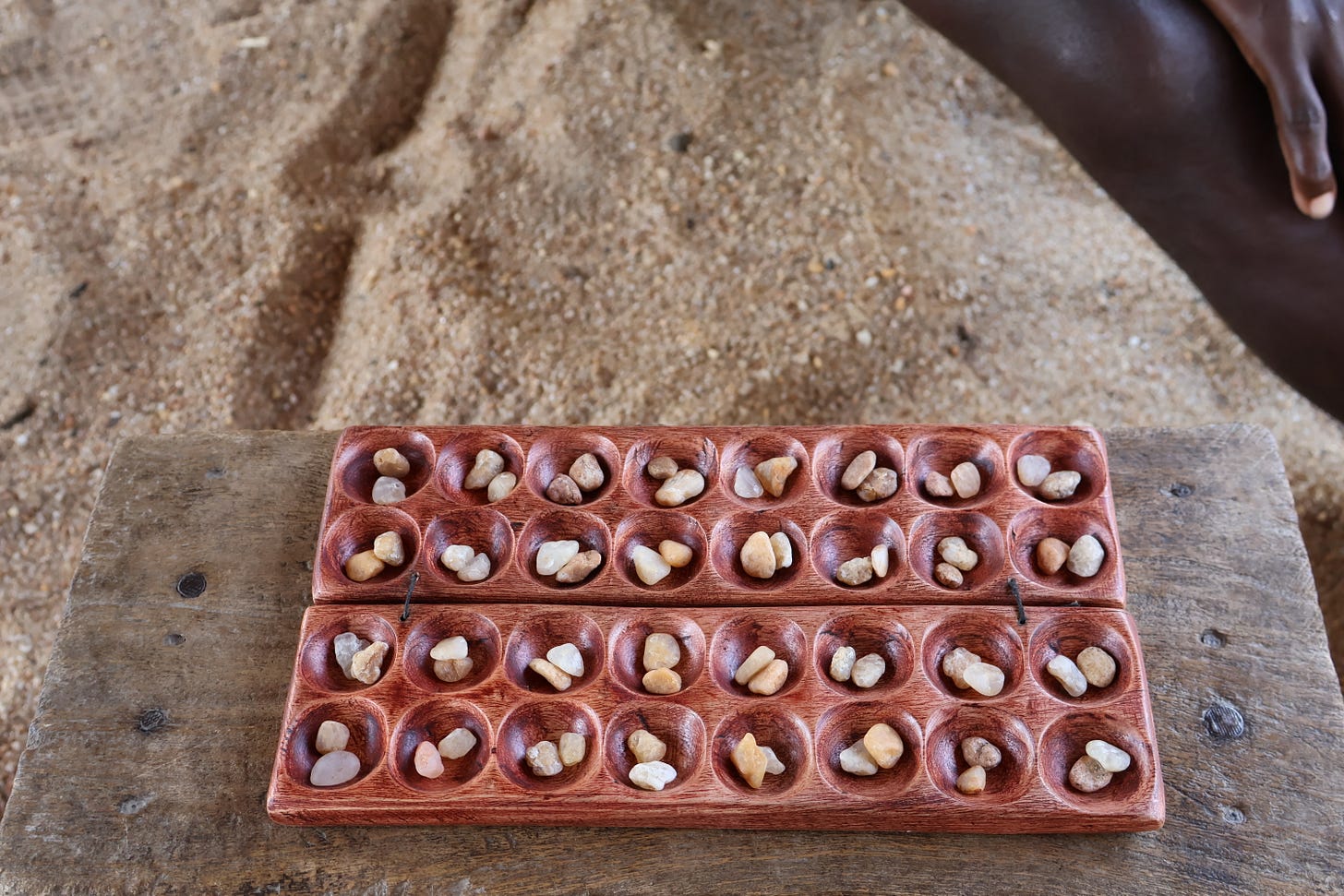
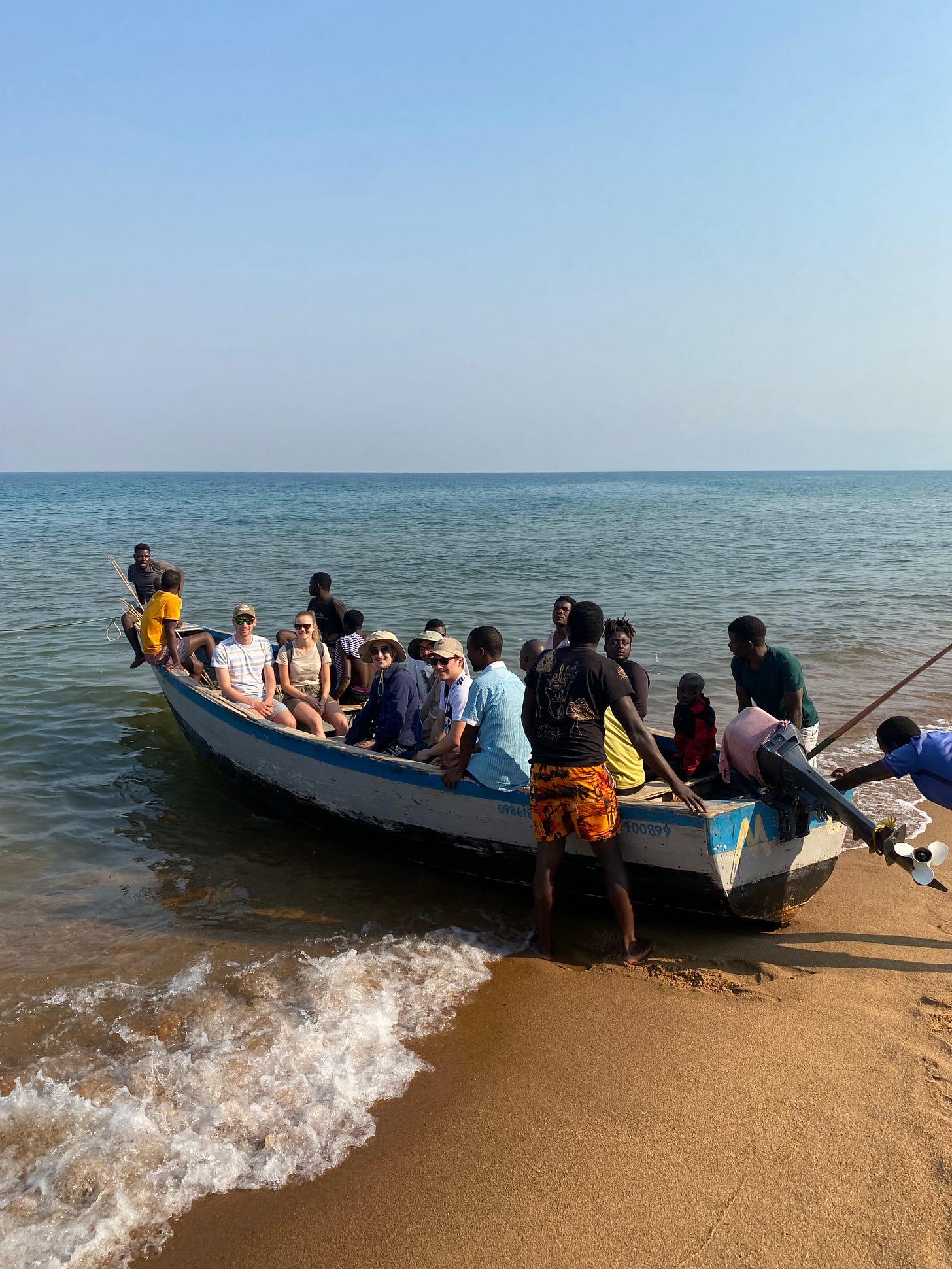
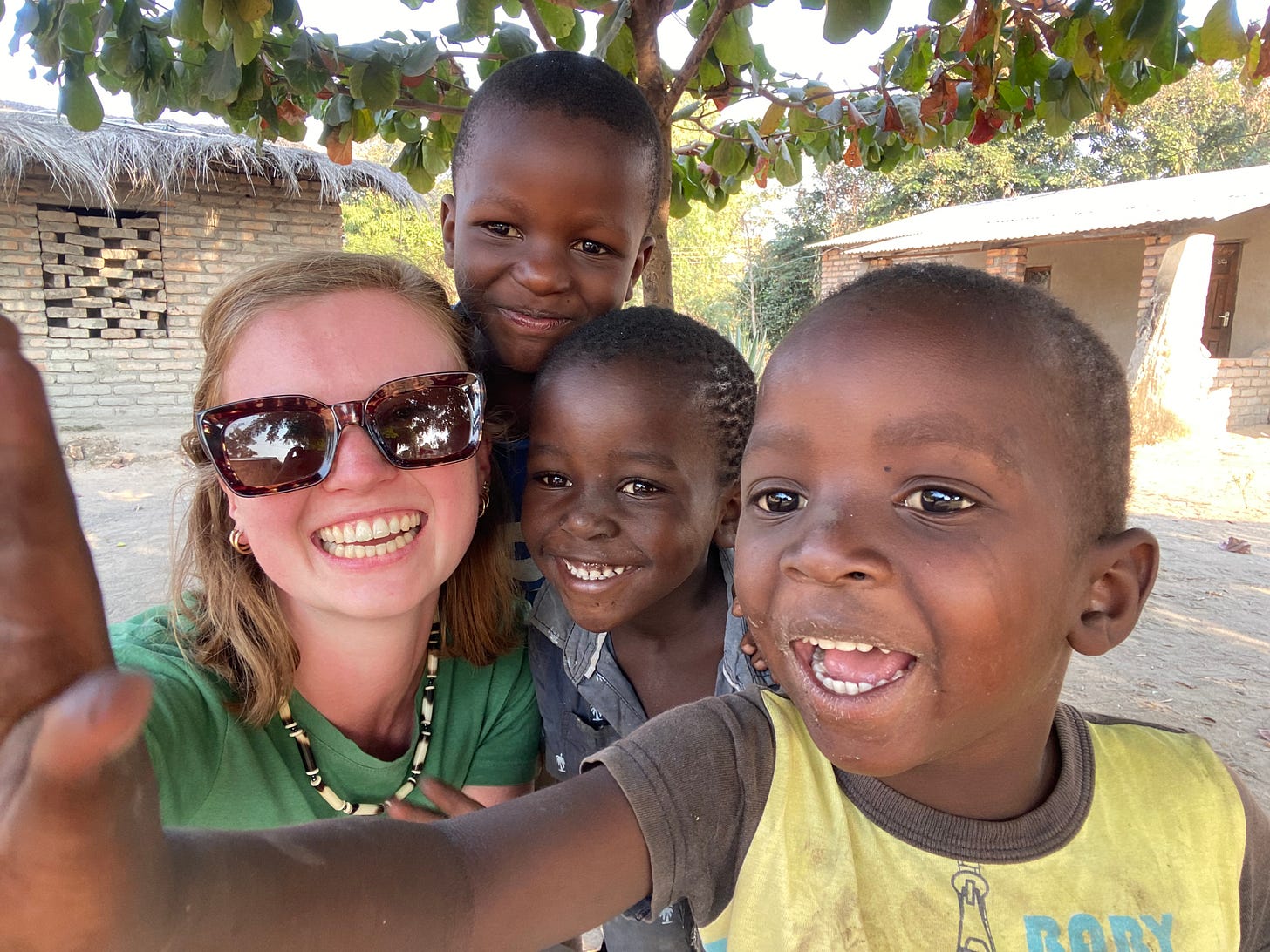
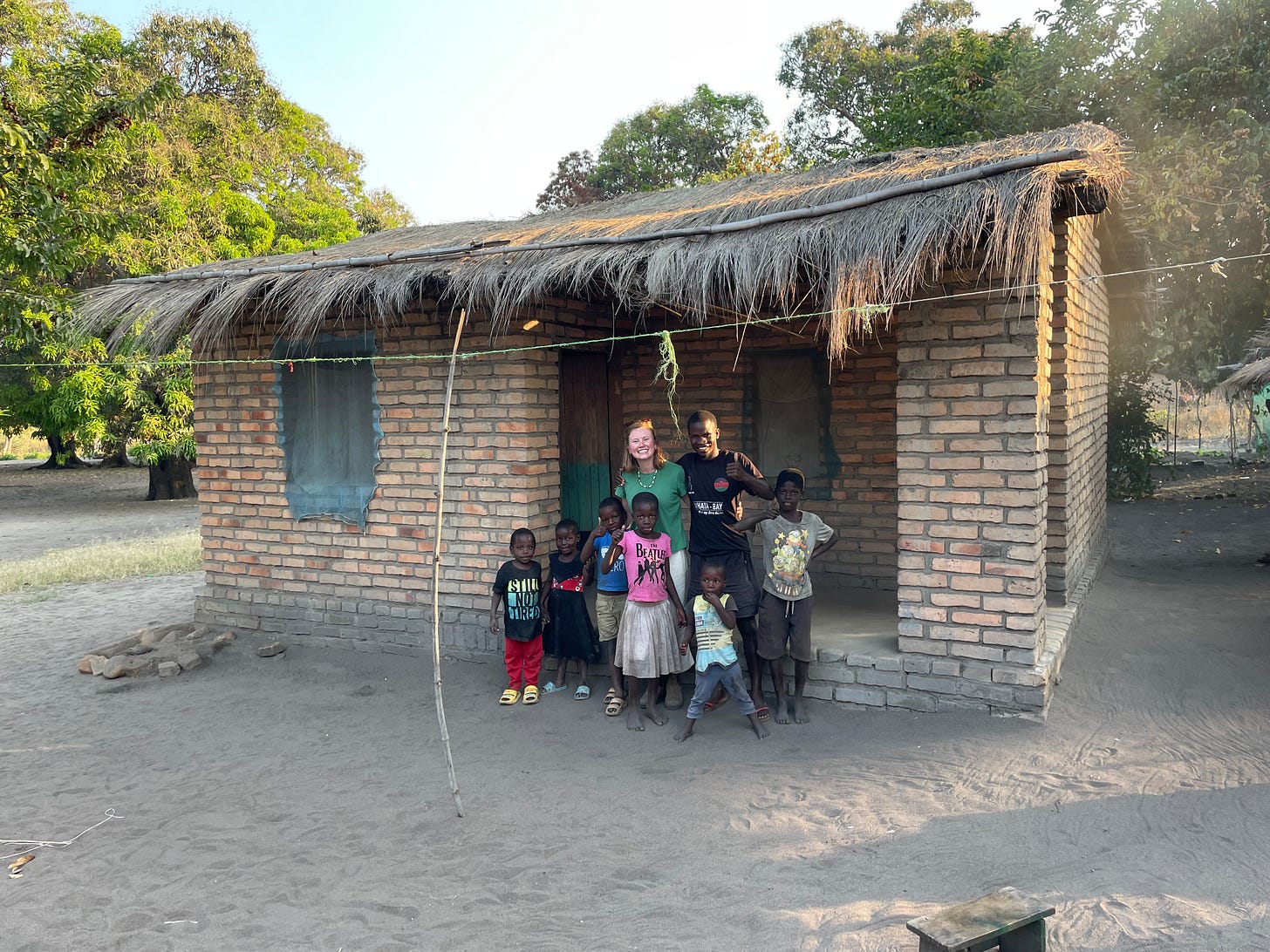

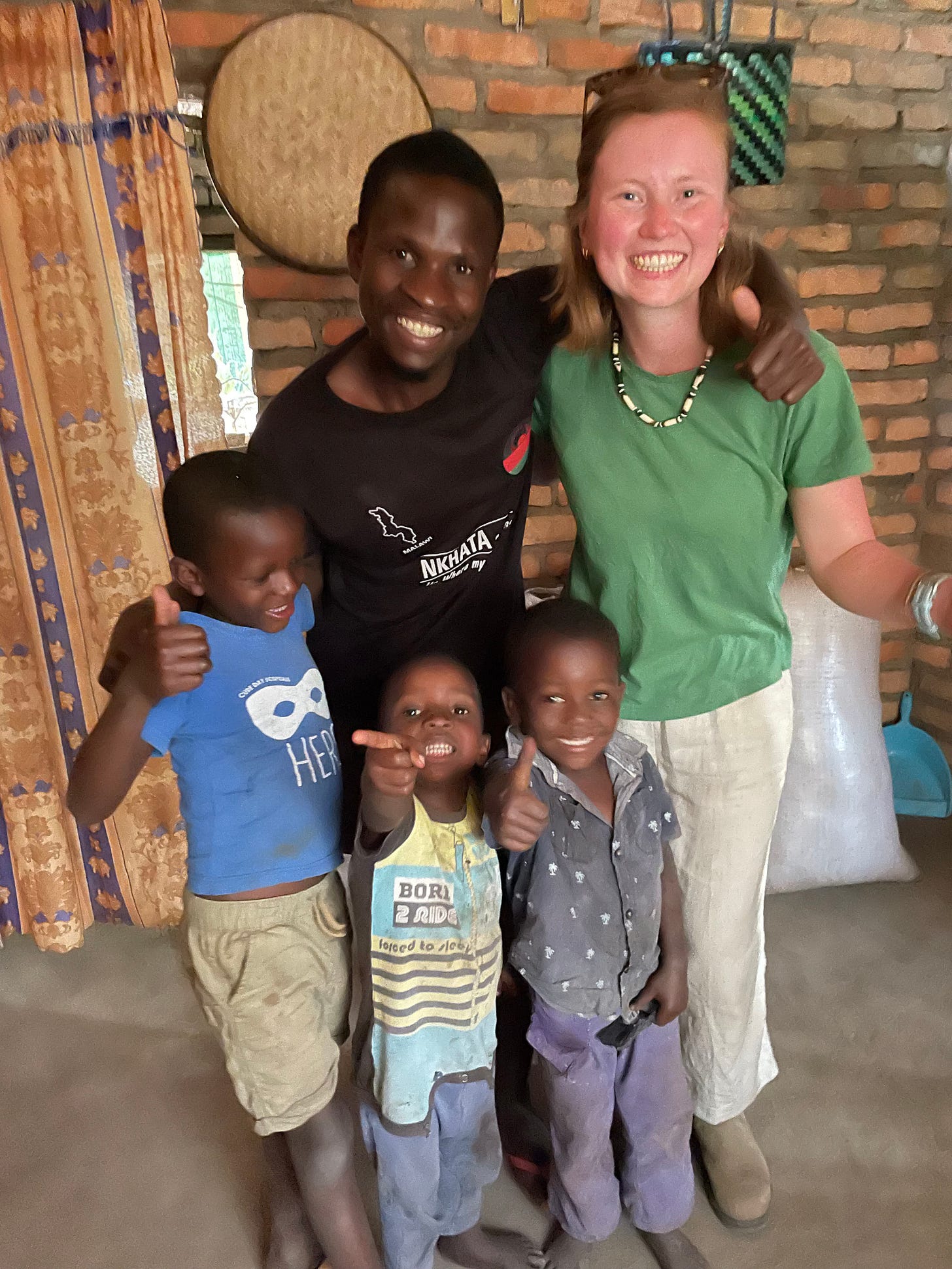
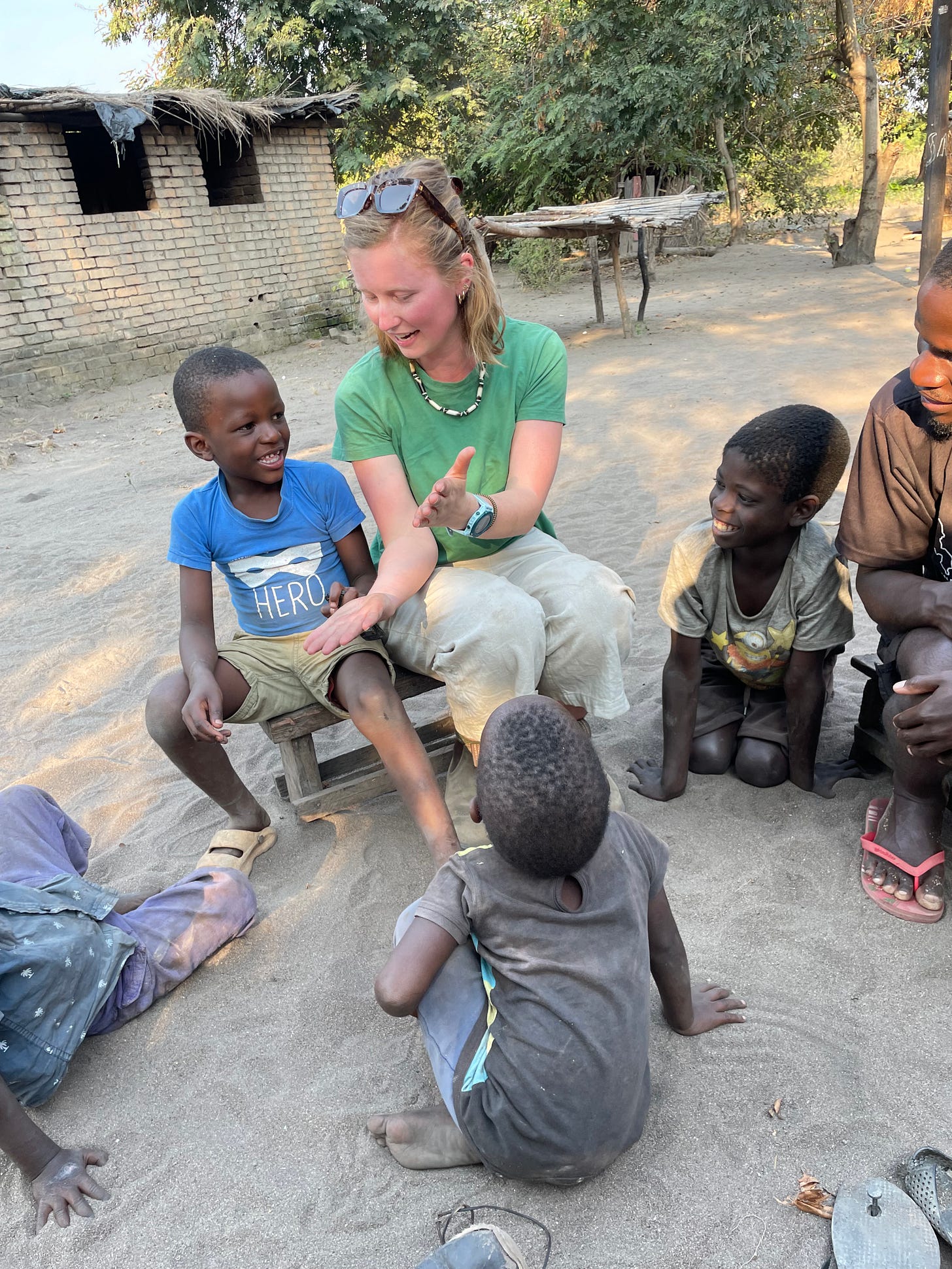


hi I liked your writing about Kande. I have been there to and I was struck by their kindness and also by the poor living conditions. I was also helped enormously by the local medicine man to make a medicine for my son who has been very ill for 4 years. I rode a scooter through the area for half a day looking for the right ingredients! When I was home a month ago, I decided to give something back to them and start a foundation. It is called 100% Malawi. because really 100% of the money that comes in there goes to Kande! all the costs of notary or site were donated to me. privately I have already donated 1000 dollars and 1000 kg of corn and sugar and soap have already been distributed there.
The site (100procentmalawi.org), will I think be online in 2 to 3 weeks and then everything can start!
We have a board here and everything has been approved by a notary. And in Kande I have 5 people who make sure it ends up in the right place.
If you could do something with it in Australia please let me know.
Rob Geurst
0031651124649
100procentmalawi@planet.nl
What a lovely write-up on village life and, especially, the part about the hand-holding kids! Takes me back to some of my best experiences in the most rural parts of Ghana, back in 1999-2000!! 🥰